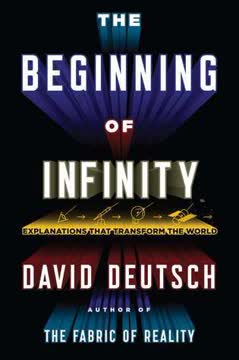Key Takeaways
1. Reality is a multiverse of parallel universes
There is no disputing the fact that such interference phenomena occur. Yet the existence of the multiverse is still a minority view among physicists. Why?
The multiverse is real. This revolutionary concept posits that our reality consists of countless parallel universes, each slightly different from the others. These universes interact through quantum interference, explaining phenomena that are otherwise inexplicable. The multiverse theory resolves paradoxes in quantum mechanics and provides a cohesive framework for understanding reality.
Evidence for the multiverse:
- Single-particle interference experiments
- Quantum computation
- Explanatory power for complex phenomena
Despite overwhelming evidence, many physicists resist accepting the multiverse theory due to its counterintuitive nature and philosophical implications. However, embracing this concept is crucial for a deeper understanding of reality and further scientific progress.
2. Quantum theory explains shadows and interference
Shadow photons would go entirely unnoticed were it not for this phenomenon and the strange patterns of shadows by which we observe it.
Quantum interference reveals hidden reality. Quantum theory explains the peculiar behavior of light and matter at the subatomic level. Experiments with shadows and interference patterns demonstrate the existence of "shadow photons" – particles that exist in parallel universes and interact with photons in our universe.
Key aspects of quantum interference:
- Single particles can interfere with themselves
- Interference patterns emerge even with individual particles
- The act of observation affects the outcome of experiments
These phenomena cannot be explained by classical physics and provide compelling evidence for the multiverse. Understanding quantum interference is essential for grasping the true nature of reality and developing advanced technologies like quantum computers.
3. Scientific progress relies on problem-solving, not induction
Scientific theories explain the objects and phenomena of our experience in terms of an underlying reality which we do not experience directly.
Problem-solving drives science. The traditional view of scientific progress through induction – generalizing from observations – is flawed. Instead, science advances through a process of creative problem-solving, where theories are proposed and tested against observations.
Steps in scientific problem-solving:
- Identify a problem or inadequacy in existing theories
- Propose new explanatory theories
- Critically analyze and test competing theories
- Adopt the theory that best solves the problem
- Identify new problems arising from the adopted theory
This approach allows for revolutionary changes in scientific understanding, as theories are judged by their explanatory power rather than mere consistency with observations. It also emphasizes the importance of creativity and critical thinking in scientific progress.
4. Virtual reality mirrors the fabric of reality
Virtual reality is not just a technology in which computers simulate the behaviour of physical environments. The fact that virtual reality is possible is an important fact about the fabric of reality.
Virtual reality reflects reality's structure. The concept of virtual reality extends beyond mere technological simulation. It is a fundamental aspect of the fabric of reality itself. Our experience of the external world is essentially a form of virtual reality generated by our brains, based on sensory inputs and internal models.
Implications of virtual reality as a fundamental concept:
- Our perception of reality is a constructed model
- The multiverse can be understood as a vast virtual reality generator
- The limits of virtual reality reflect the limits of physical reality
Understanding virtual reality in this broader sense provides insights into the nature of consciousness, perception, and the structure of the multiverse. It also suggests that our ability to create artificial virtual realities is deeply connected to the fundamental nature of reality itself.
5. Computation is universal and quantum in nature
Not only do none of the copies of an object have any privileged position in the explanation of shadows that I have just outlined, neither do they have a privileged position in the full mathematical explanation provided by quantum theory.
Computation is fundamental to reality. The concept of universal computation, as embodied in the Turing principle, is a fundamental aspect of reality. This principle states that it is possible to build a computer capable of simulating any physically possible environment. Moreover, computation in reality is inherently quantum in nature.
Key aspects of universal quantum computation:
- All physically possible environments can be simulated
- Quantum computers can perform tasks impossible for classical computers
- Computation is not just a human invention, but a fundamental process in nature
This understanding of computation has profound implications for our view of reality, suggesting that the universe itself can be seen as a vast quantum computer. It also provides a framework for understanding the limits and possibilities of artificial intelligence and other advanced technologies.
6. Life and knowledge are fundamental to reality
Life is about the physical embodiment of knowledge, and in Chapter 6 we came across a law of physics, the Turing principle, which is also about the physical embodiment of knowledge.
Life embodies knowledge. Life is not just a chemical process, but a fundamental phenomenon of reality that involves the physical embodiment of knowledge. This knowledge is encoded in genes and allows organisms to survive and replicate in their environments.
Characteristics of life as embodied knowledge:
- Genes are programs that render organisms in virtual reality
- Evolution is a process of knowledge creation
- Life's impact on the universe is potentially vast
Understanding life in this way connects it to other fundamental aspects of reality, such as computation and the multiverse. It suggests that the emergence of life and intelligence is not a mere accident, but a deep feature of the universe's structure.
7. Time is not a flow, but a dimension of the multiverse
We do not experience time flowing, or passing. What we experience are differences between our present perceptions and our present memories of past perceptions.
Time is a dimension, not a flow. The common-sense notion of time as a flowing present moment is an illusion. In reality, time is more like a dimension of the multiverse, similar to the spatial dimensions. There is no objective "now" moving from past to future.
Key aspects of the quantum concept of time:
- All moments exist simultaneously in the multiverse
- Our perception of time's flow is subjective
- Other times are special cases of other universes
This understanding of time resolves paradoxes in physics and provides a more coherent view of reality. It challenges our intuitive notions of causality and free will, requiring a reevaluation of these concepts in light of the multiverse theory.
8. Mathematical truths are part of physical reality
Abstract entities that are complex and autonomous exist objectively and are part of the fabric of reality.
Mathematics is physical. Mathematical truths are not mere abstractions, but objective features of physical reality. The realm of mathematical entities is as real as the physical world we experience directly, and our ability to understand mathematics is grounded in the physical structure of the universe.
Implications of mathematics as part of physical reality:
- Mathematical discoveries are explorations of existing structures
- The effectiveness of mathematics in describing nature is explained
- There is no absolute certainty in mathematics, as in physics
This view challenges traditional Platonist and formalist philosophies of mathematics, suggesting a deeper connection between mathematical and physical reality. It also implies that advances in physics could lead to new mathematical insights, and vice versa.
9. Cause and effect exist across universes, not within spacetime
Other times are just special cases of other universes.
Causality transcends individual universes. In the multiverse, cause and effect relationships exist not within a single spacetime, but across multiple universes. This resolves paradoxes associated with determinism and free will in classical physics.
Understanding causality in the multiverse:
- Events in one universe can influence events in others through interference
- The "flow" of time is replaced by relationships between universes
- Free will and choice involve the divergence of universes
This perspective on causality provides a more coherent framework for understanding phenomena like quantum measurement and the arrow of time. It also suggests new approaches to long-standing philosophical problems, such as the nature of consciousness and personal identity.
Last updated:
FAQ
What's The Fabric of Reality about?
- Exploration of Reality's Structure: David Deutsch's book explores the nature of reality through four main strands: quantum physics, epistemology, the theory of computation, and the theory of evolution. These interconnected theories provide a comprehensive understanding of the universe.
- Challenge to Traditional Views: Deutsch challenges conventional notions of reality, suggesting that our understanding must evolve beyond common sense. He emphasizes the importance of scientific theories as explanations rather than mere predictive tools.
- Multiverse Concept: A significant theme is the Many Worlds Interpretation of quantum mechanics, which posits the existence of parallel universes. This idea reshapes our understanding of existence and the nature of physical laws.
Why should I read The Fabric of Reality?
- Intellectual Stimulation: The book offers a thought-provoking perspective on complex scientific concepts, making it suitable for readers interested in physics, philosophy, and the nature of knowledge.
- Interdisciplinary Connections: It interweaves various fields, showing how physics, biology, and computation relate to our understanding of reality. This holistic approach encourages critical thinking about the interconnectedness of knowledge.
- Challenging Assumptions: Reading this book will challenge your preconceptions about reality and encourage you to consider deeper explanations for the phenomena we observe.
What are the key takeaways of The Fabric of Reality?
- Unified Theory of Everything: Deutsch proposes a comprehensive understanding of reality through a unified theory encompassing quantum physics, computation, and evolution.
- Importance of Explanations: The book emphasizes that scientific theories should be valued for their explanatory power rather than just their predictive capabilities.
- Reality Beyond Observation: Deutsch asserts that reality consists of more than what we can observe directly, including unobservable entities and phenomena.
What is the significance of quantum physics in The Fabric of Reality?
- Foundation of Modern Physics: Quantum physics is one of the four main strands shaping our understanding of reality, with implications for the nature of existence and parallel universes.
- Interference and Multiverse: The book explores how quantum interference phenomena lead to the conclusion that multiple universes exist, challenging the traditional view of a single, observable universe.
- Complexity of Reality: Quantum physics illustrates that reality is inherently complex and cannot be fully understood through classical physics alone.
How does David Deutsch define reality in The Fabric of Reality?
- Reality as a Multiverse: Deutsch defines reality as a multiverse composed of numerous parallel universes, each with its own version of events.
- Criteria for Reality: He introduces criteria for determining what is real, emphasizing that entities exhibiting complex and autonomous behavior should be considered real.
- Explanatory Power: The definition of reality is tied to the explanatory power of theories, reinforcing the idea that reality extends beyond mere observation.
What is the role of epistemology in The Fabric of Reality?
- Theory of Knowledge: Epistemology, the study of knowledge, is one of the four strands examined by Deutsch, influencing our perception of reality and the validity of scientific theories.
- Problem-Solving Framework: Deutsch presents epistemology as a framework for problem-solving, where theories are conjectured and tested against observations.
- Critique of Inductivism: The book critiques the inductivist approach to knowledge, advocating for a problem-solving approach that prioritizes explanations over mere observations.
How does The Fabric of Reality address the theory of computation?
- Computational Limits: Deutsch discusses the theory of computation as crucial for understanding reality, particularly in relation to virtual reality and the capabilities of computers.
- Universality in Computation: The concept of universality suggests that a universal computer can simulate any computation, paralleling the notion of virtual reality.
- Interconnectedness of Knowledge: The theory of computation is linked to other strands, illustrating how computation underpins our understanding of physics and biology.
What are Cantgotu environments in The Fabric of Reality?
- Definition of Cantgotu Environments: Cantgotu environments are logically possible environments that cannot be rendered by any physically possible virtual-reality generator.
- Diagonal Argument: The concept is derived from a diagonal argument, showing that for every environment that can be rendered, there are infinitely many that cannot be.
- Implications for Reality: This idea underscores the notion that while many environments can be simulated, vast realms of possibility remain inaccessible.
What is the Turing principle as described in The Fabric of Reality?
- Universal Computation: The Turing principle states that it is possible to build a universal computer capable of performing any computation that any other physical object can perform.
- Implications for Knowledge: This principle suggests that the laws of physics allow for a universal virtual-reality generator, capable of rendering every physically possible environment.
- Connection to Reality: Deutsch argues that the Turing principle is fundamental to understanding the fabric of reality, linking computation, knowledge, and the physical universe.
How does The Fabric of Reality redefine knowledge?
- Knowledge as a Physical Process: Deutsch asserts that knowledge is not merely subjective but has objective significance in the multiverse, emerging from interactions across different universes.
- Growth of Knowledge: The book emphasizes that knowledge grows through conjecture and criticism, aligning with Popperian epistemology.
- Interconnectedness of Knowledge: Deutsch argues that knowledge is interconnected across the multiverse, allowing for a richer understanding of existence.
What are the philosophical implications of The Fabric of Reality?
- Rethinking Existence: The book encourages readers to reconsider their understanding of existence, knowledge, and the nature of reality, blending scientific inquiry with philosophical exploration.
- Critique of Reductionism: Deutsch critiques reductionist views that prioritize physical explanations over the significance of knowledge and abstract entities.
- Knowledge and Reality: The philosophical implications extend to how we perceive knowledge itself, suggesting it is not merely a human construct but a fundamental aspect of the universe.
What are the best quotes from The Fabric of Reality and what do they mean?
- "The Book of Nature is written in mathematical symbols.": This quote emphasizes the idea that the universe can be understood through mathematical laws and theories.
- "If it can kick back, it exists.": This encapsulates Dr. Johnson's criterion for reality, suggesting that entities interacting with us in complex ways should be considered real.
- "Science is a process of problem-solving.": This quote underscores the idea that scientific inquiry is driven by the need to address inadequacies in existing theories.
Review Summary
The Fabric of Reality received mixed reviews. Many praised its thought-provoking ideas on quantum mechanics, epistemology, and the nature of reality. Readers appreciated Deutsch's explanations of complex concepts and his ambitious attempt to unify different scientific theories. However, some found parts of the book confusing or overly speculative. Critics argued that Deutsch's arguments were sometimes flawed or insufficiently supported. Despite these criticisms, many readers found the book intellectually stimulating and perspective-changing, even if they didn't agree with all of Deutsch's conclusions.
Similar Books
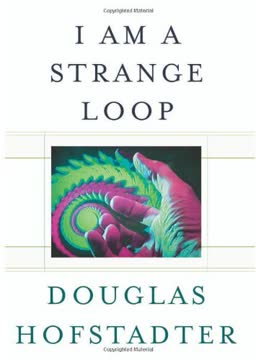



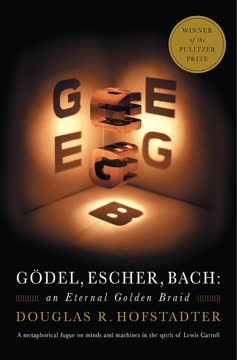
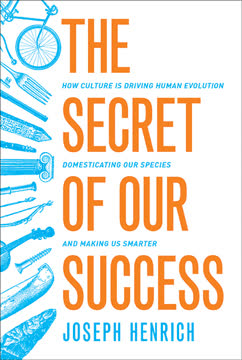

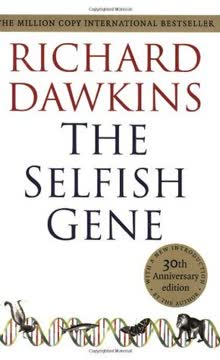
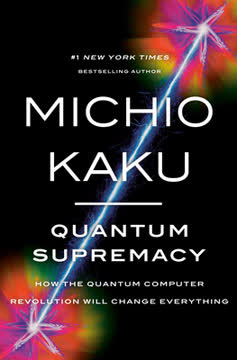

Download PDF
Download EPUB
.epub digital book format is ideal for reading ebooks on phones, tablets, and e-readers.

